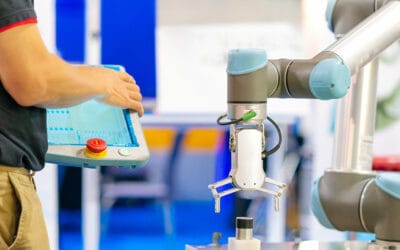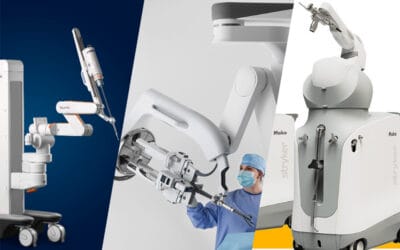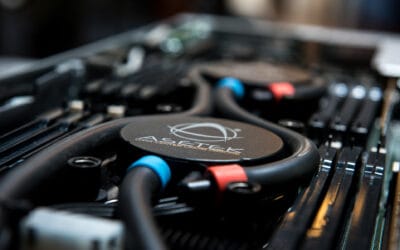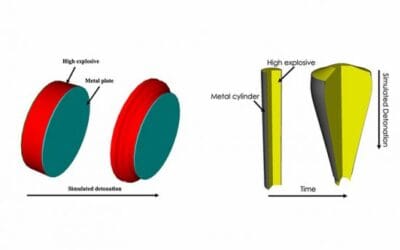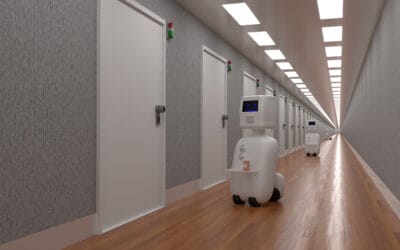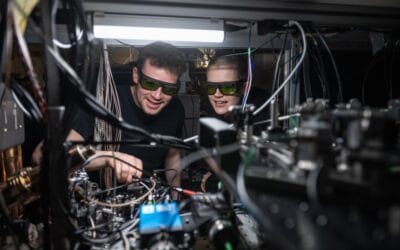Robotics News
Collaborative robot market to reach $7.2B by 2030, predicts ABI Research
Despite a lack of growth in 2023 and 2024, the latest report from ABI Research predicted that revenue from collaborative robots will increase from $970 million in 2023 to $7.2 billion by 2030 at a compound annual growth rate, or CAGR, of 28%. The research firm said...
Automatic gripper changes can add flexibility in manufacturing
Production manufacturing demands are increasingly diverse, so adaptability and efficiency are essential, according to Hakan Aydogdu, CEO of Tezmaksan Robot Technologies. Automatic gripper changes provide a practical solution for CNC machines to transition seamlessly...
New MIT tech helps drones fly in dark using millimeter waves
In the future, autonomous drones could be used to shuttle inventory between large warehouses. A drone might fly into a semi-dark structure the size of several football fields, zipping along hundreds of identical aisles before docking at the precise spot where its...
10 surgical robotics companies to watch in 2025
Intuitive Surgical Inc. remains the leading surgical robotics provider — but other companies with savvy strategies are generating buzz and raising money. Surgical robotics experts agree that the most promising technologies provide robot-assisted surgery options that...
Dusty Water: A Look Inside Liquid Cooling
This past year at SC24, there was a marked increase in liquid cooling companies. The term “liquid cooling” describes moving system heat through water rather than air. Moving water is much more complicated than moving ambient air but can hold much more heat by volume...
What Are Reasoning Models and Why You Should Care
The meteoric rise of DeepSeek R-1 has put the spotlight on an emerging type of AI model called a reasoning model. As generative AI applications move beyond conversational interfaces, reasoning models are likely to grow in capability and use, which is why they should...
Quantum Computing Is Dead. Long Live Quantum Computing! | WIRED
Schrödinger’s cat is alive and dead at the same time. Ironically enough, so is quantum computing.Source: Quantum Computing Is Dead. Long Live Quantum Computing! | WIRED
LLNL Researchers Quantify Metal Strength Uncertainty in High-Explosives Models
For the first time, a team of researchers at Lawrence Livermore National Laboratory (LLNL) quantified and rigorously studied the effect of metal strength on accurately modeling coupled metal/high explosive (HE) experiments, shedding light on an elusive variable in an...
Robots in nursing homes can improve patient care, employee retention, finds study
Nursing homes are increasingly turning to robots to complete a variety of care tasks to offset high employee turnover and an aging population. In 2022, for instance, more than 57 million U.S. residents were 65 or older, according to the National Council on Aging. The...
HPCwire Unveils 2025 People to Watch
HPCwire, the leading publication for news and information for the high performance computing industry, today unveiled its People to Watch for 2025. This feature highlights key community members who are driving the industry forward, people you should be keeping an eye...
How Software Engineers Actually Use AI | WIRED
We surveyed 730 coders and developers about how (and how often) they use AI chatbots on the job. The results amazed and disturbed us.Source: How Software Engineers Actually Use AI | WIRED
Oxford Team Demonstrates Quantum Teleportation of Logic Gates Across Network
In a milestone that brings quantum computing tangibly closer to large-scale practical use, scientists at Oxford University’s Department of Physics have demonstrated the first instance of distributed quantum computing. Using a photonic network interface, they...

